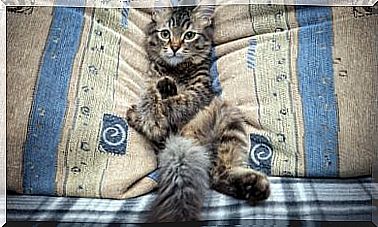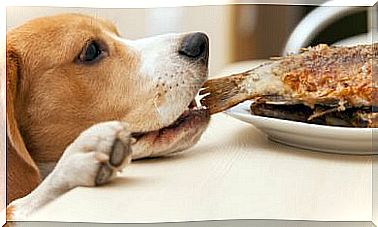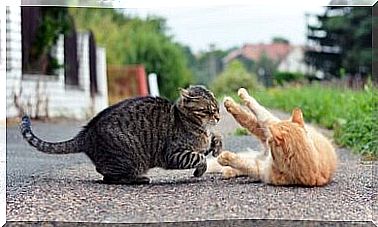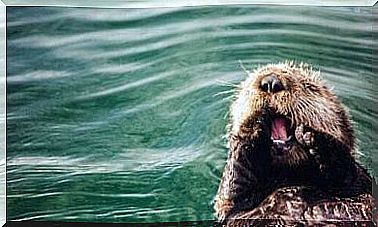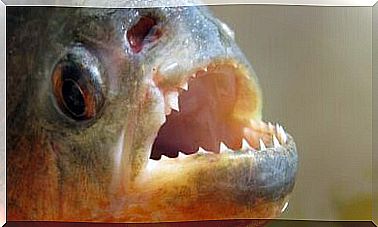Lucky Cat: Where Does This Belief Come From?

Surely you have seen in front of the entrance of a shop or a house a white or golden puppet that moves its paw to greet the newcomers. It is the so-called “Cat of Fortune”, which comes from Japanese culture. In this article we will tell you where this belief comes from and much more.
Fortune Cat: Why Do Many Have One?
The sculpture can be both plastic and porcelain, but it always has the same meaning: to bring good luck. Many people believe this kitten is greeting because of its raised paw. Indeed, it is in a calling position. Orientals flex their backs and heads to say hello, so raising your hand to say “hello” or “goodbye” is a purely Western feature.
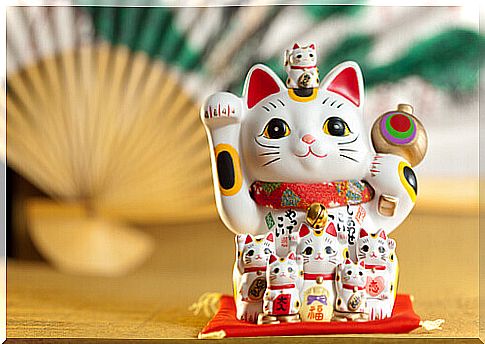
The Fortune Cat’s original name is Maneki-Neko. The first word means “invitation to enter”, while the second means “cat” in Japanese. Therefore, it would be like “the cat inviting you to enter”. The position of its paw undoubtedly indicates this.
The feline that inspired this object so popular in Asian countries (but also in European and American ones) is the Japanese Bobtail. This breed is famous for not having a tail due to a natural mutation of the spine.
The Fortune Cat is found in all types of shops, restaurants and homes. The left leg is the one it usually holds up or in motion, (depending on the material it is made of), and with the right it holds an ancient coin known as a Koban. Also, she can have a rattle necklace to ward off evil spirits.
Meaning of the colors of the Cat of Fortune
Symbolism in Japan is very important, so the Maneki-Neko can have various versions. Each of these means something different.
For example, the fact that you greet with your right paw is synonymous with money and prosperity; if he does it with his left hand, he attracts visitors. There are sculptures with both legs raised, and that means protection.
There are also differences based on the color of the Lucky Cat. The most effective are the tricolor ones (black, white and orange), and are said to be suitable for travelers. This peculiarity concerning the tones of the hair is known as Calico, and is very common in Bobtails.
You can find Maneki-Neko green (for health and for study), white (for the positive events that will happen in the future), golden or silver (luck in business), red (love), yellow (economy), light blue (for the realization of dreams), pink (marriage) and black (happiness and to ward off bad luck).
Legend and history of the Cat of Fortune
Where does the tradition of putting a sculpture of a cat with its paw up at the entrance of shops or houses come from? It is based on three explanations that are inspired by legends.

The first tells of a temple with many economic problems. Here, a monk shared his meager food with a cat named Tama. One day, a feudal lord was taking shelter under a tree from the rain and saw a tricolor cat calling him to enter the temple. As the man approached the animal, a branch of the tree fell right where it was before. As a reward, he financed repairs to the temple, which resumed prosperity.
The second story tells the facts of a Tokyo courtesan who had a cat. This was murdered by the owner of the brothel because he believed he was bewitched. The woman suffered greatly from the death of the animal. For this reason, a client made a portrait of the cat with wood so that it would always be with her.
Finally, an old woman from Tokyo had to sell her cat due to its condition of extreme poverty. The feline appeared to her in a dream asking her to create a clay sculpture of her body, which she was able to give away immediately. From that point on, he made many statues of the animal, thus increasing his customers.
